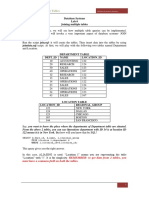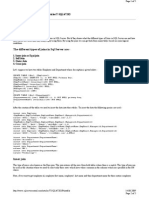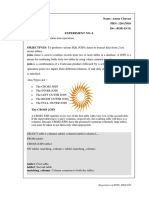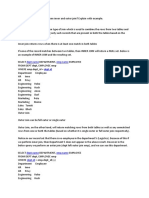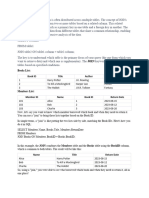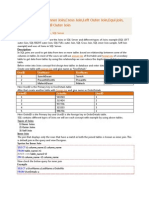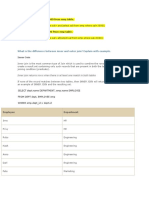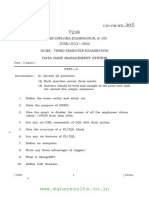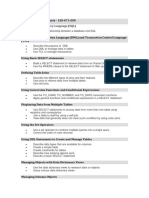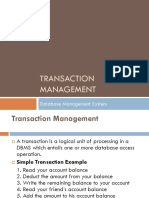0% found this document useful (0 votes)
22 views10 pagesJoin Notes With Examples
The document explains SQL join clauses, which combine records from two or more tables, detailing types such as INNER, OUTER, LEFT, RIGHT, CROSS, and SELF joins. It provides examples of SQL syntax for each join type, illustrating how they function and their use cases in relational databases. Additionally, it discusses the implications of NULL values and the differences between explicit and implicit join notations.
Uploaded by
nandhiniCopyright
© © All Rights Reserved
We take content rights seriously. If you suspect this is your content, claim it here.
Available Formats
Download as DOCX, PDF, TXT or read online on Scribd
0% found this document useful (0 votes)
22 views10 pagesJoin Notes With Examples
The document explains SQL join clauses, which combine records from two or more tables, detailing types such as INNER, OUTER, LEFT, RIGHT, CROSS, and SELF joins. It provides examples of SQL syntax for each join type, illustrating how they function and their use cases in relational databases. Additionally, it discusses the implications of NULL values and the differences between explicit and implicit join notations.
Uploaded by
nandhiniCopyright
© © All Rights Reserved
We take content rights seriously. If you suspect this is your content, claim it here.
Available Formats
Download as DOCX, PDF, TXT or read online on Scribd
/ 10





















